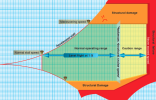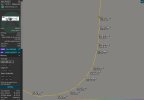According to the flight instructor seated in the left seat, the purpose of the flight was to conduct a Title 14 CFR Part 141 proficiency check in order for the flight instructor seated in the right seat to begin instructing at the flight school. The flight departed from Treasure Coast International Airport (FPR), Fort Pierce, Florida and proceeded about 10 miles southwest to perform a variety of training maneuvers. The left seat instructor reported that the right seat instructor satisfactorily demonstrated maneuvers including chandelles, lazy eights, and slow flight. Subsequently, the right seat instructor asked him, “Can you show me something new? ”The left seat instructor responded that given he was already an instructor, there were no new maneuvers, but added, “I can show you an EASA [European Union Aviation Safety Agency(EASA)] maneuver.” He described that the maneuver involved a power-off aerodynamic stall and recovery without the use of engine power. The left seat instructor took the flight controls and initiated the demonstration; he pitched up and entered a full aerodynamic stall, with power at idle. After the airplane stalled, he recalled pitching to “Vg” (glide airspeed, 73 knots) to recover from the stall. During the recovery, with power at idle, he stated, “the right wing came off” and there was an “abrupt banking tendency” to the right.



